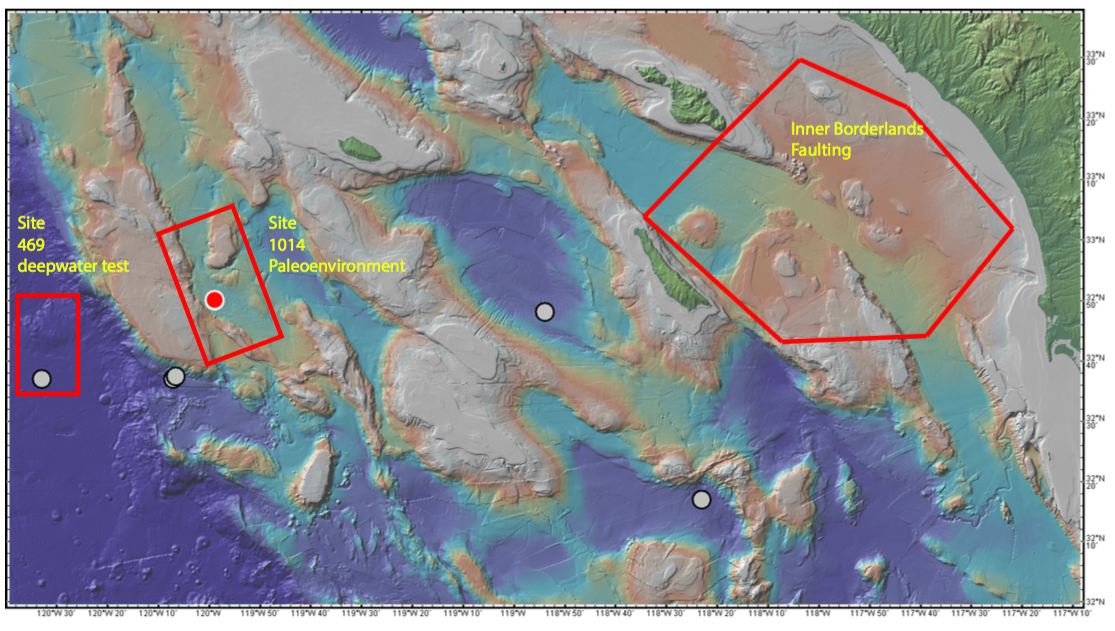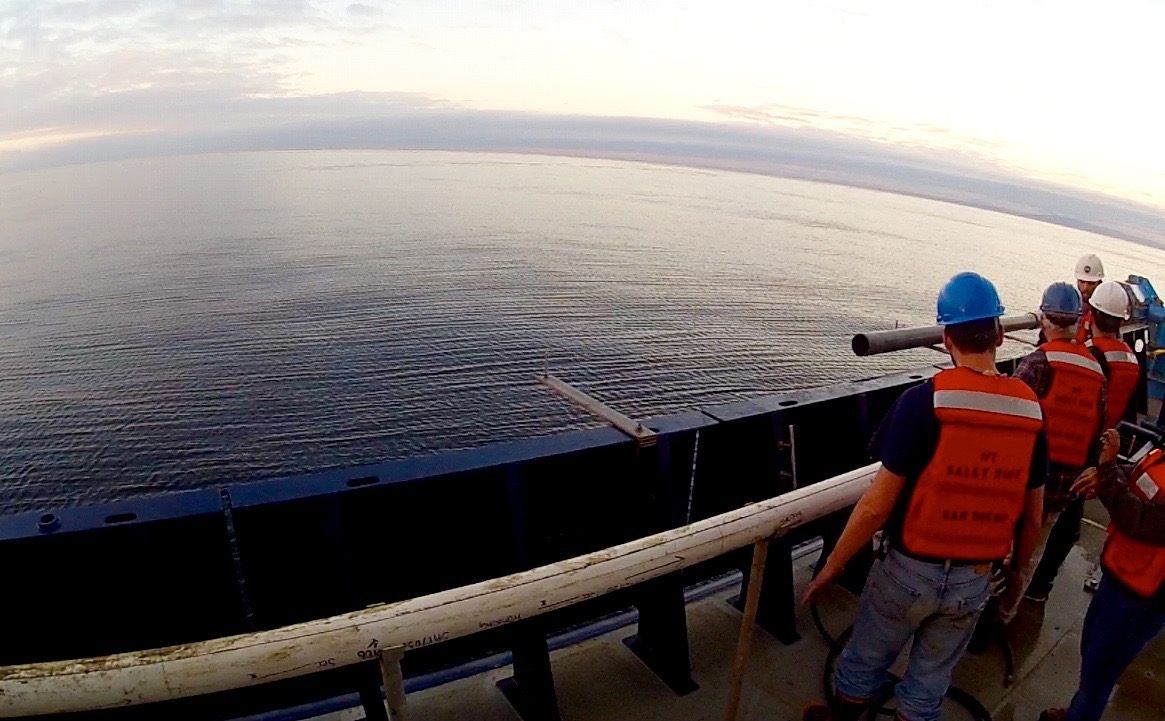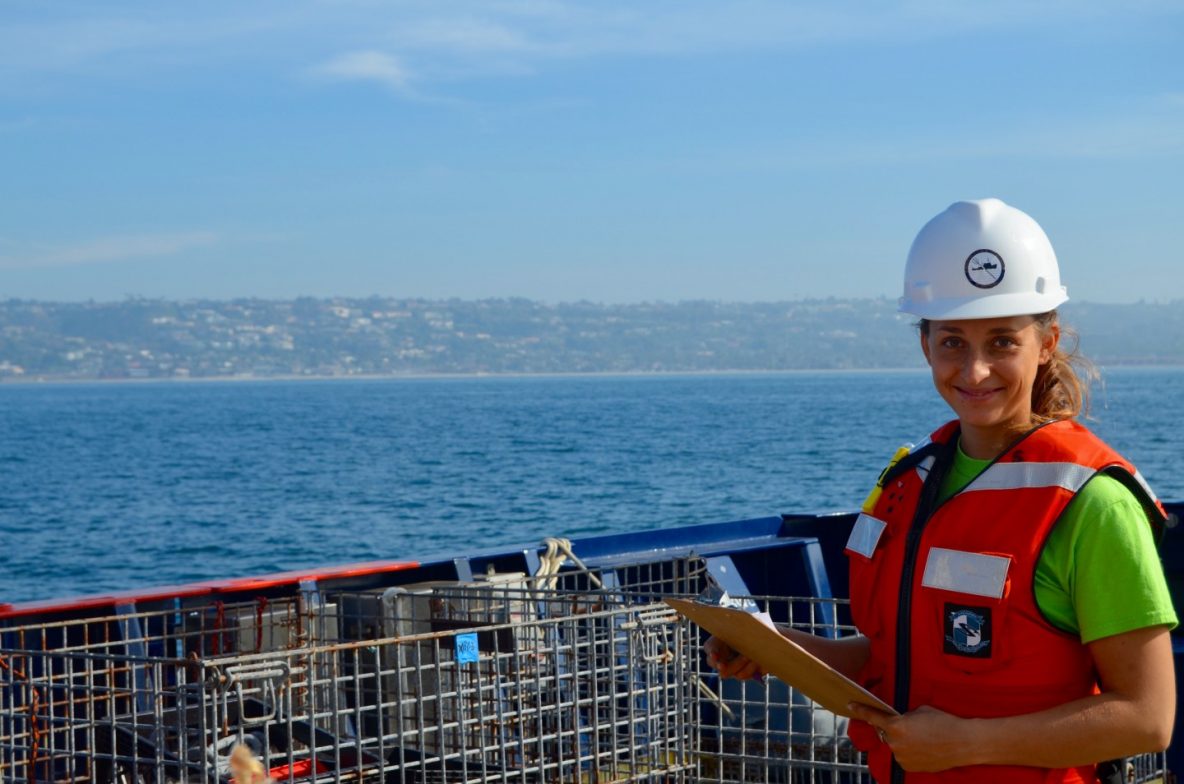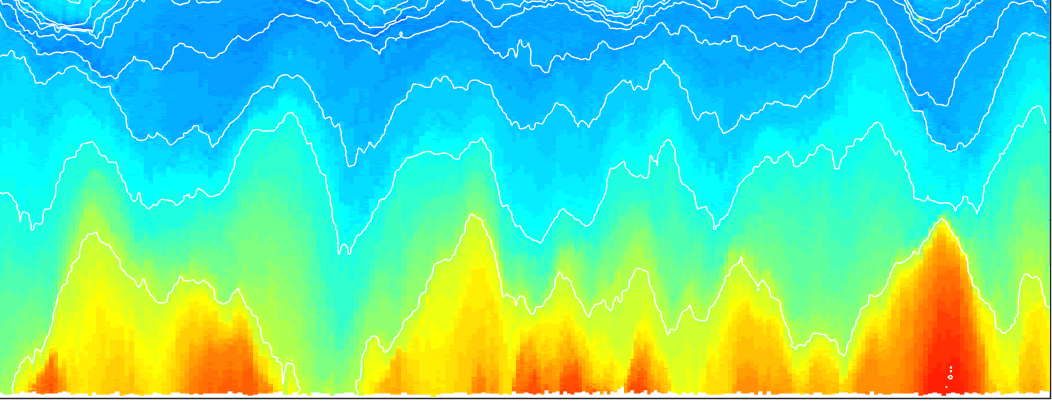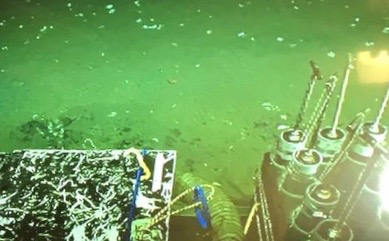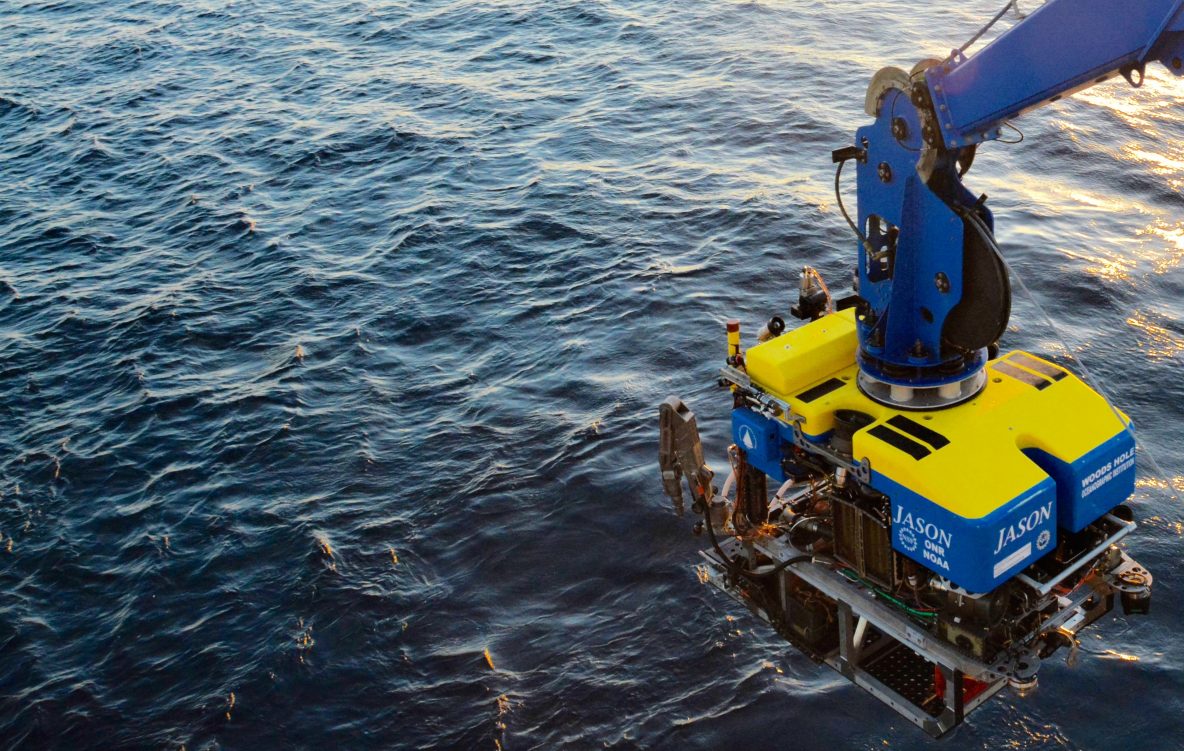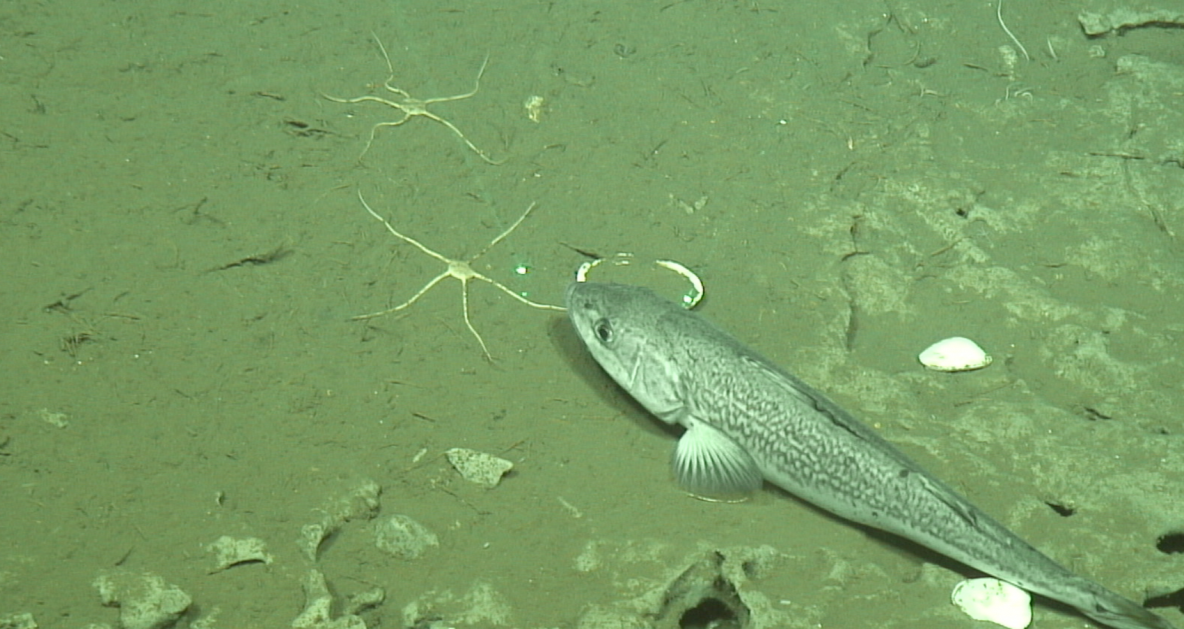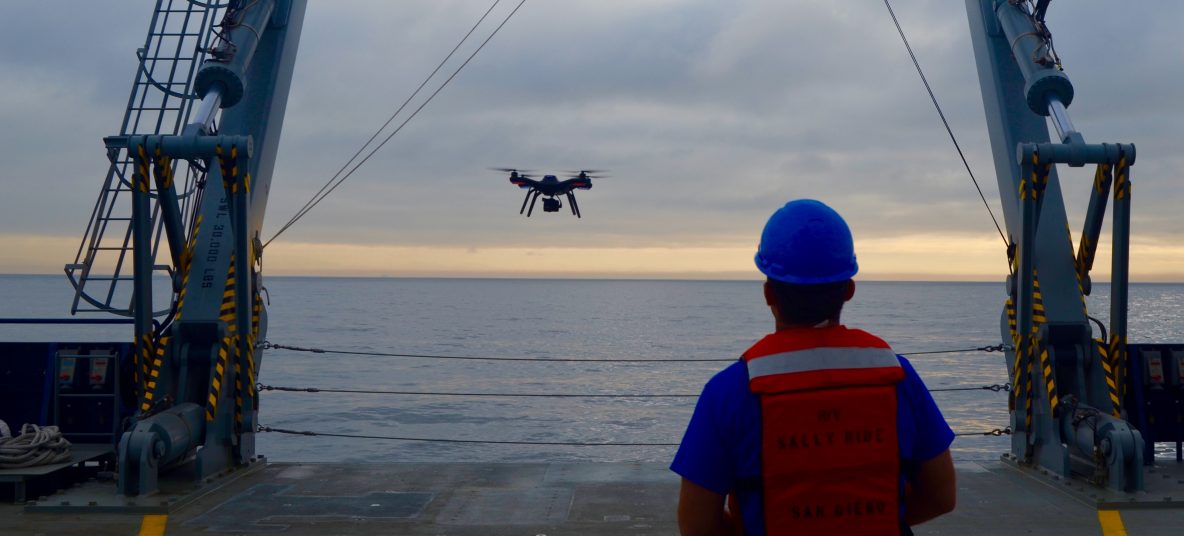Coring operations are taking place mostly during daylight hours, with the ship running overnight survey transits. An echo sounder mounted to the bottom of the ship sends a 3.5kHz ping and records the return, producing sub-bottom profiles. These images typically show the types of sediments 20-50 meters below the ocean floor, and can capture up to 100 meters under certain conditions. The ping is a … Read More
Sediment Science
The current science verification cruise aboard R/V Sally Ride will test the ship’s ability to support coring operations. Seafloor sediment cores reveal information about the history and behavior of off-shore fault systems. They also provide insights into what the climate was like thousands of years ago. Scientists from multiple institutions are working together to collect and process cores, including students … Read More
All That Water
Aboard R/V Sally Ride, we’re always studying the ocean as part of the science – but that’s not the only water we have to be concerned with. Thankfully for those in the science party, the engineering crew takes care of all the rest (in addition to keeping the ship’s propulsion and electricity up and running). The ship is capable of making … Read More
The Internal Waves of La Jolla Canyon
As you may recall, last month R/V Sally Ride was easily visible from La Jolla and Scripps Institution of Oceanography. The science mission was to recover moorings (strings of instruments anchored to the seafloor) that were deployed in the La Jolla Canyon area a few months earlier. Belonging to the lab of Scripps professor Dr. Matthew Alford, these moorings collect data for the study … Read More
ROV Jason visits the Del Mar Seep
In 2012, a methane seep was discovered by a group of SIO graduate students on a UC Ship Funds research cruise onboard Scripps’ now-retired research vessel Melville. SIO’s ROV Trident was used to take video of the site as well as collect samples from the seafloor. Now called the Del Mar Seep, it’s the first of its kind to be studied off the coast of San … Read More
Experiments on the Seafloor with ROV Jason
During last month’s cruise aboard R/V Sally Ride, an ROV named Jason (after the Greek mythological hero and explorer) was deployed in order to test the ship’s capabilities, performing scientific operations under the direction of Scripps scientists. Labs at the Institute of Geophysics and Planetary Physics (IGPP) at Scripps study seismographic data from the ocean floor using tiltmeters to measure … Read More
Ecological Insights from ROV Jason
Last month, R/V Sally Ride went out to sea for a week with the remotely operated vehicle (ROV) Jason onboard, which is owned by Woods Hole Oceanographic Institution (WHOI). One of the science verification cruises, the main purpose was to ensure that the ship was able to support the ROV work in a way that the technicians at WHOI are … Read More
The Ever-Changing Lab
The lab space on R/V Sally Ride is on the main deck, just forward of the fantail. There is a “wet” lab and a “dry” lab, separated by a door. The wet lab connects right to the staging bay via water-tight door, where equipment to be deployed over the side of the ship can be stored when it’s not being used. Sampling can … Read More
Drones for Science
During a recent science verification cruise, Dr. Eric Terrill’s group from here at Scripps Institution of Oceanography tested out some of their suite of remote-controlled oceanographic equipment – modified aerial and aquatic vehicles that can be loaded up with sensors and sent out on scientific missions. Drones are becoming more and more popular – from the hobbyist to the military, … Read More

